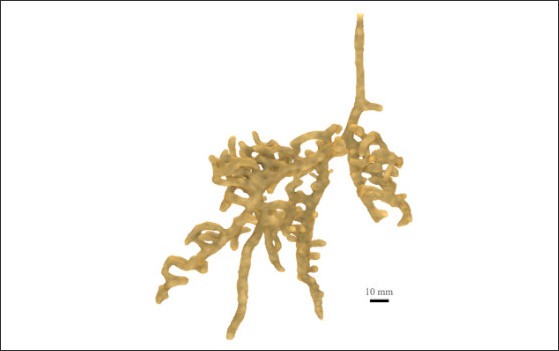Scientists from Agroscope and two partner universities used X-ray imaging to provide new insights into the underground life of ground-nesting bees. The results highlight the locally important role of ground-nesting bees as soil ecosystem “engineers” improving soil health.
Most research on wild bees has focused on their role as pollinators, while their importance as soil ecosystem “engineers” has been largely overlooked, despite the fact that most species nest in the soil. Scientists from Agroscope and the universities ETH Zürich and Swedish University of Agricultural Sciences used X-ray computed tomography to quantify the morphology and temporal evolution of burrow systems created by both solitary and social species.
Differences between social and solitary bee species
Burrows created by the solitary species are simple, linear and unbranched burrows, which are not reused and decay with time. The burrow systems created by the social species are more complex, with highly branched networks of horizontal and vertical burrows, which increase in complexity and size over time during the bee activity period.
Burrows can persist for at least 16 months
The persistence of the studied burrows created by ground-nesting bees varied greatly, with some decaying within a few weeks and others remaining mostly intact for the entire 16-month study period.
This study highlights the locally important role of ground-nesting bees as soil ecosystem “engineers”. Their activity improves soil health by breaking up and ventilating the soil and making the soil more water permeable. Furthermore, the study showcases the great potential of x-ray scanning of ground-nesting bee nests for future basic and applied research to better protect and promote bee pollinators.






